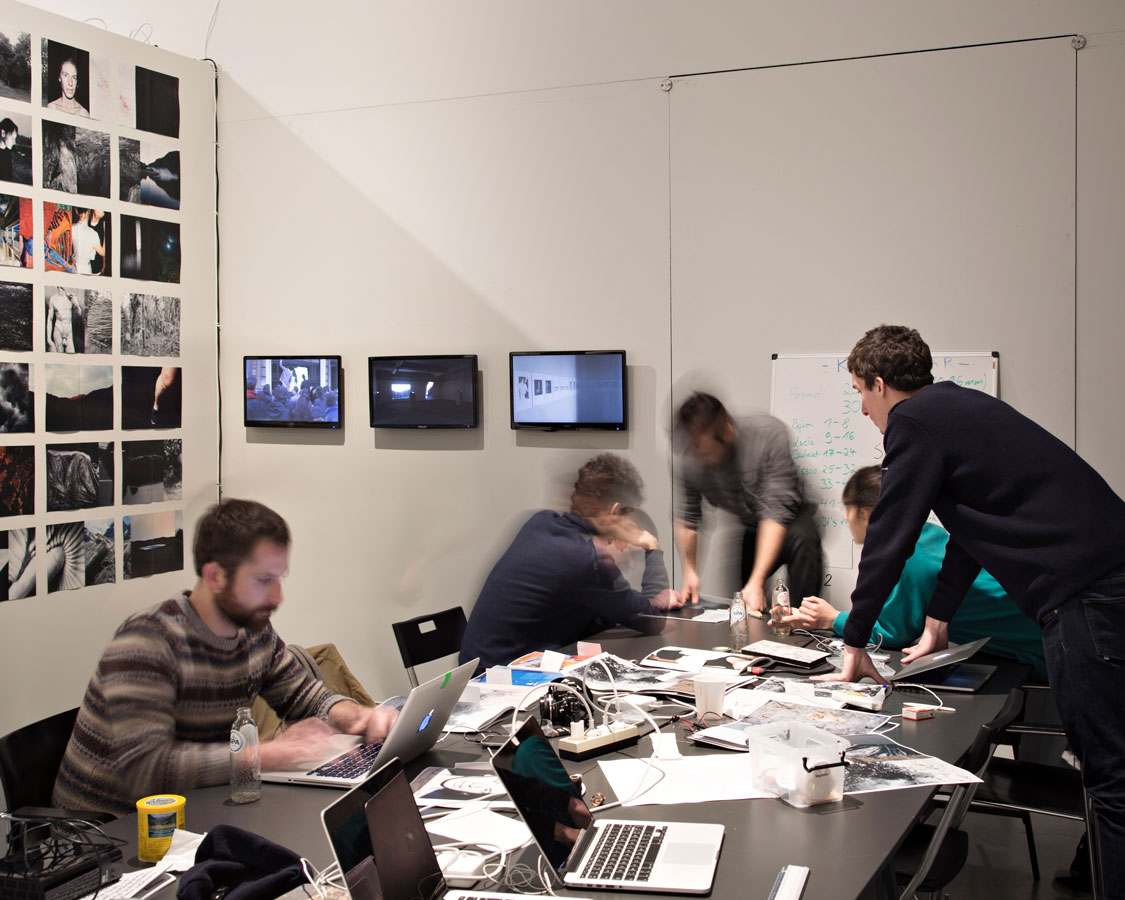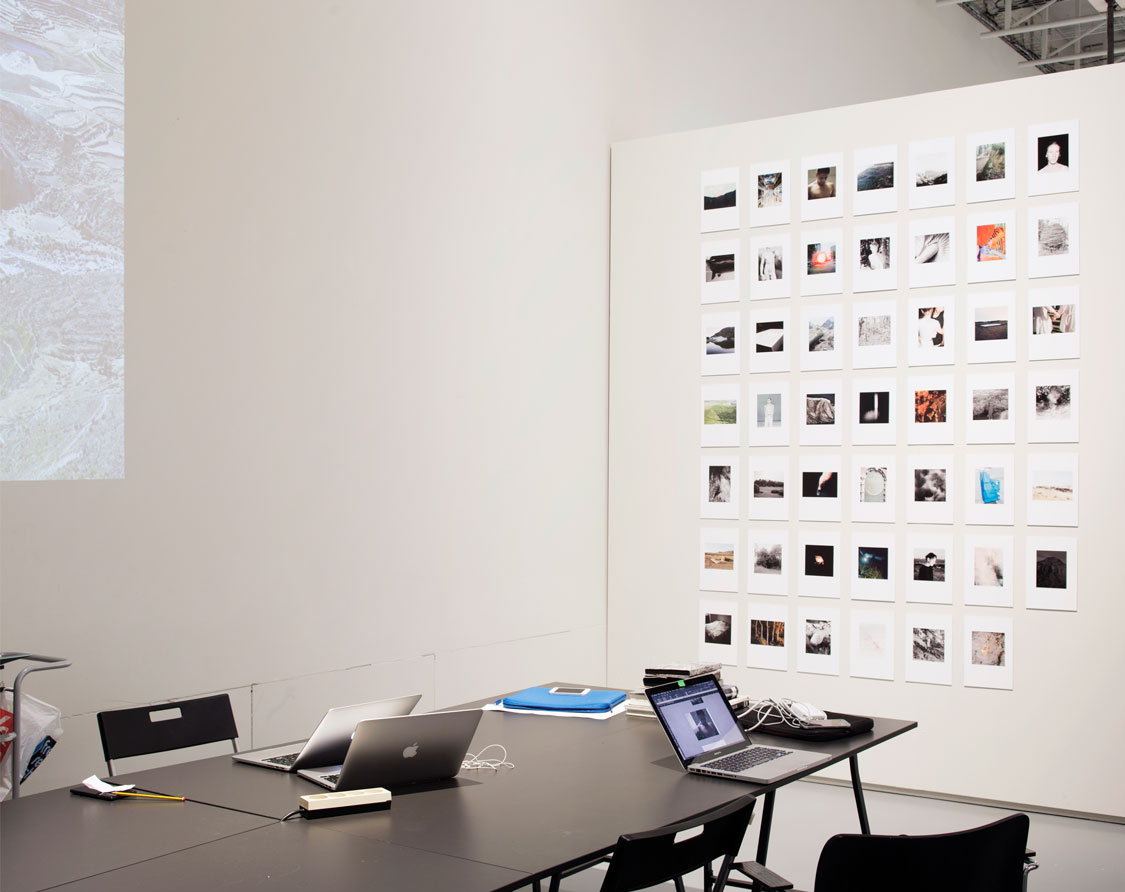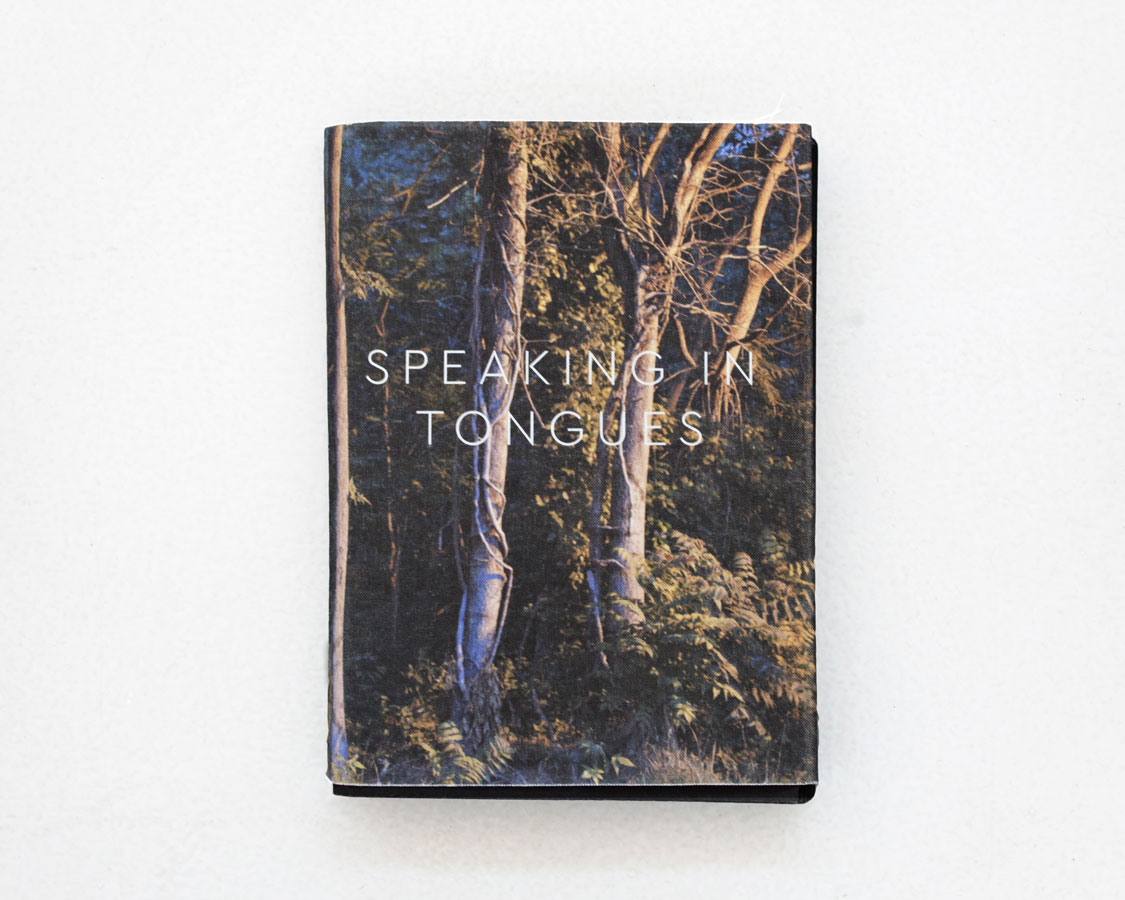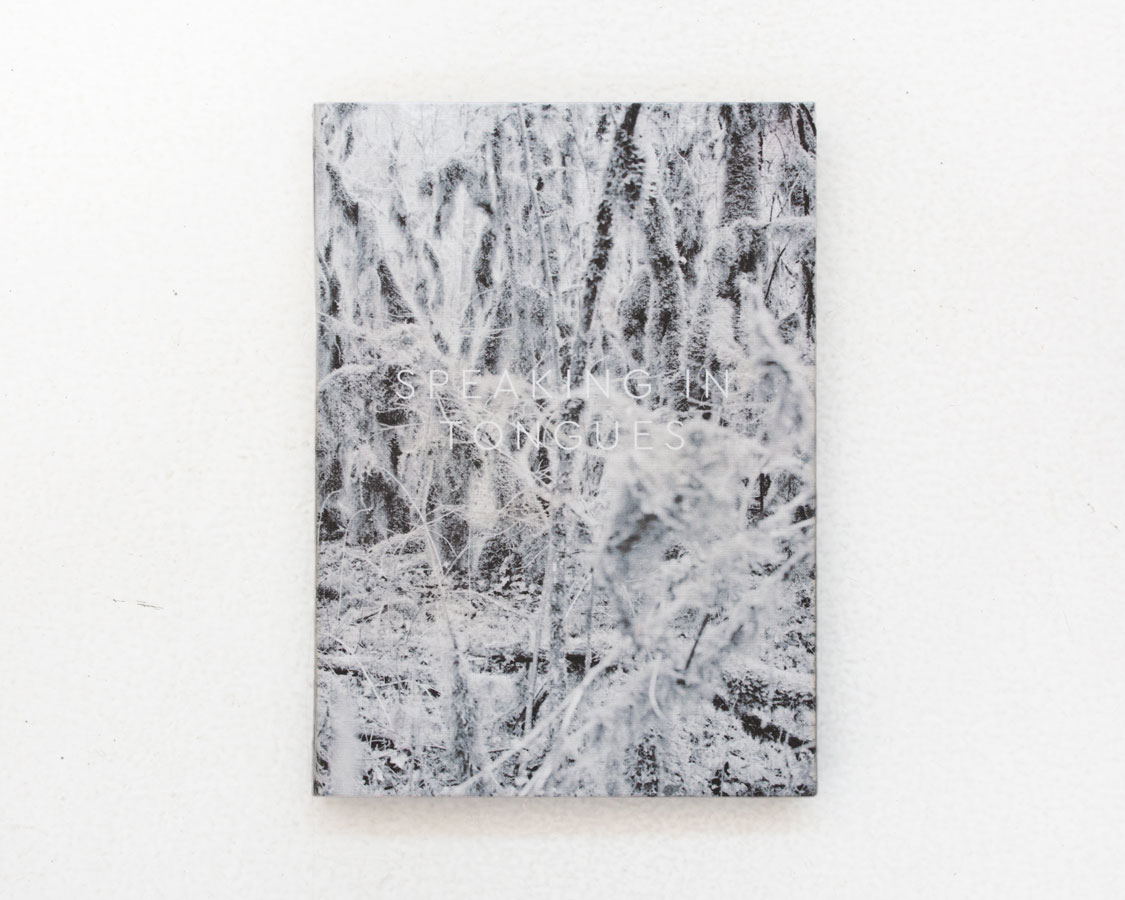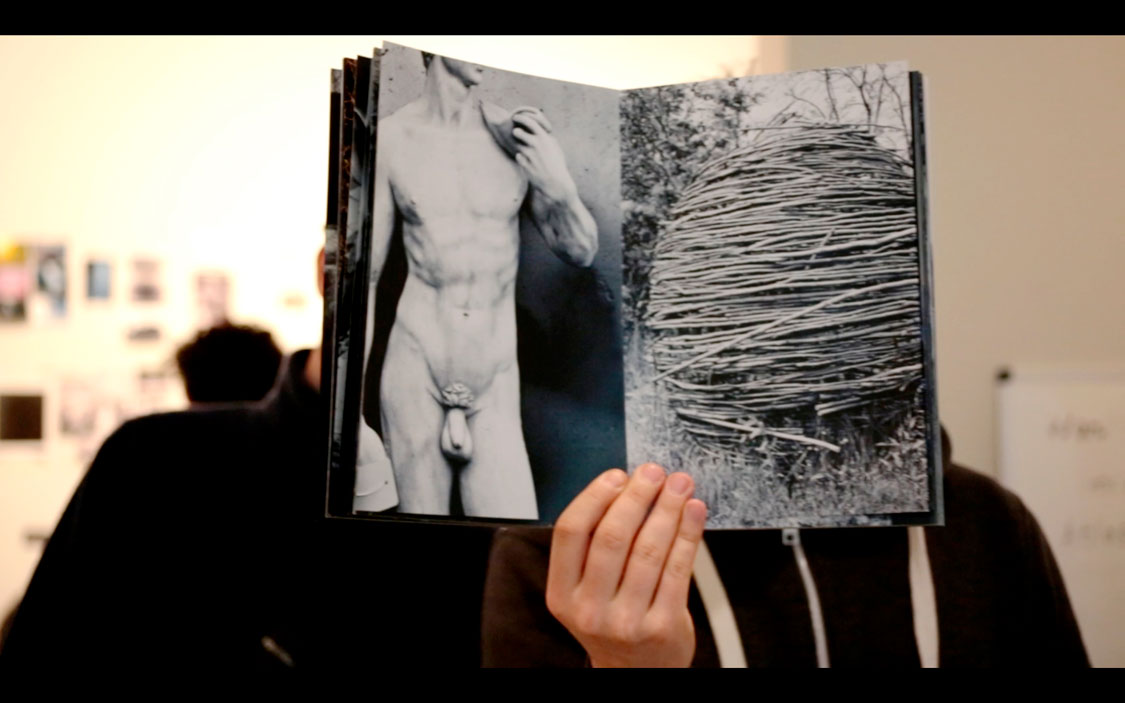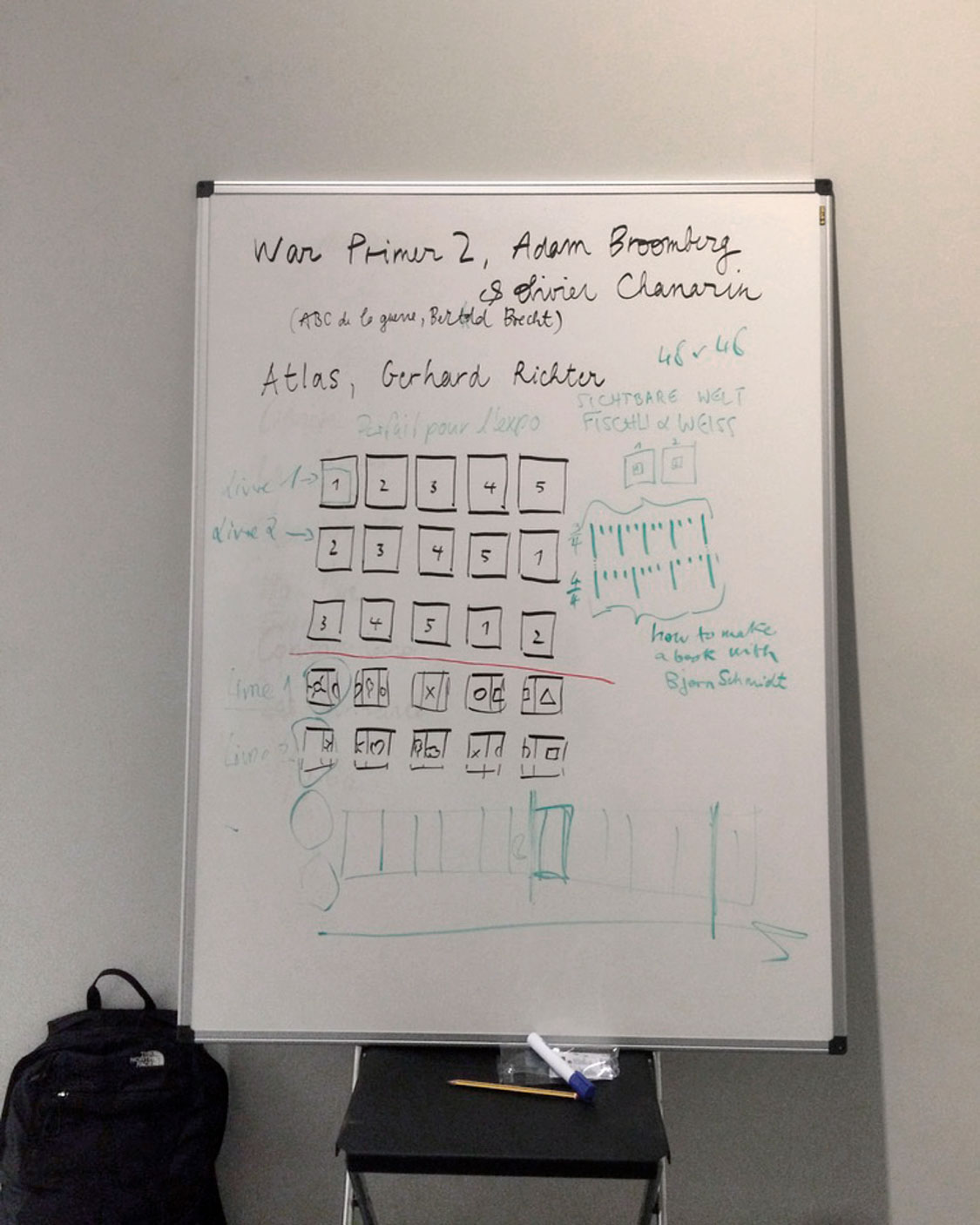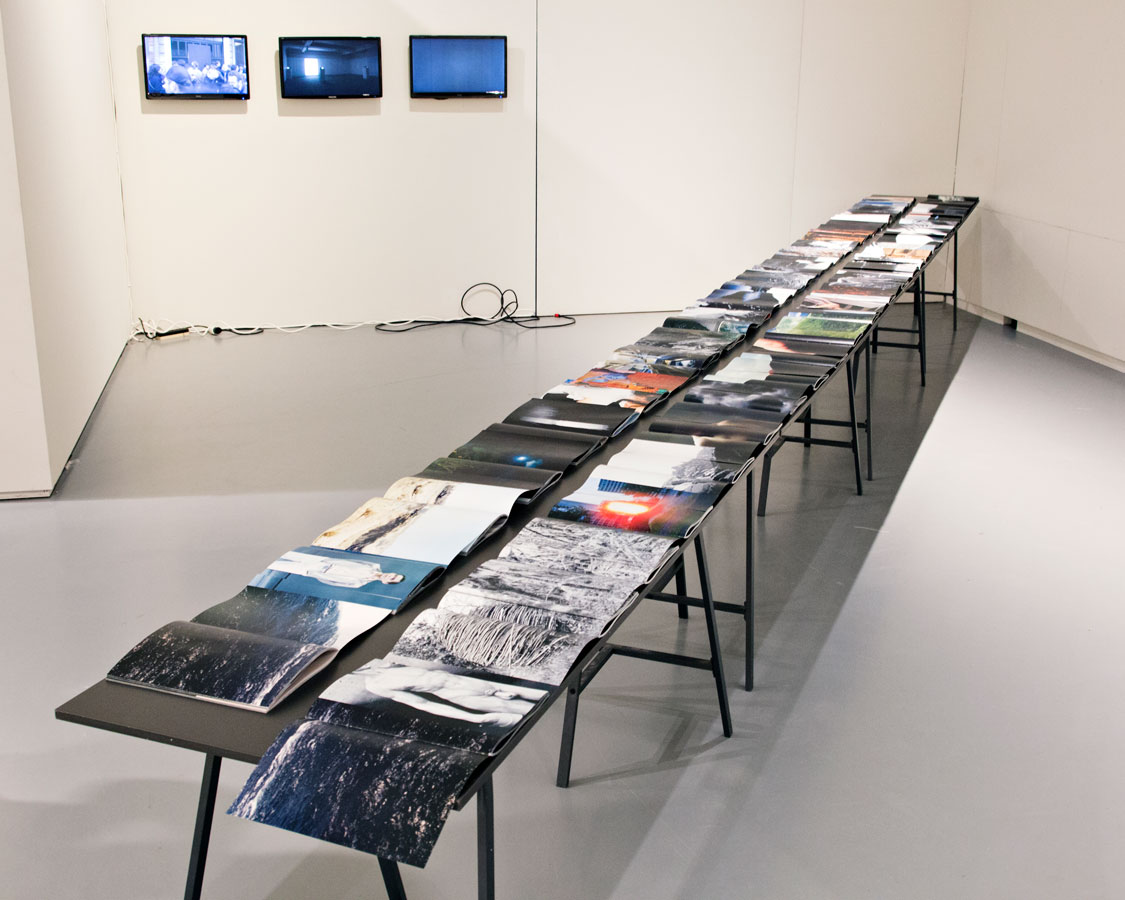Collective La Grotte, working hard not to get their tongues in a twist
Interview by Stefan Vanthuyne. Photographer, writer and researcher at the Royal Academy of Fine Arts Antwerp, he is doing research on contemporary photobook culture in Belgium and working on building a Belgian Platform for Photobooks. This is a preview of the sort of content you will find there.
Five young photographers make up the Belgian collective La Grotte: Bertrand Cavalier, Maud Faivre, Lucie Dufour, Massao Mascaro and Gilles Ribero. Each member has his or her roots in France, but it is Brussels and more importantly School of Arts Le 75 that brought them together. While the collective initially was formed to speak out louder as a group of photographers than as mere individuals, La Grotte – the cave – is now turning more and more into an experimental lab. Instead of speaking out loud, the focus has shifted to speaking in tongues – consequently the name of the long-term collective project we will be discussing here. With this project they use their individual images, throw them in the mix and try to find a common language to create a photobook. German book designer Björn Schmidt joins the collective for the ride. Different art residencies and exhibitions influence them, their process and the book along the way.
Bertrand Cavalier: ‘We were looking for a new project to work on as a collective, instead of just working on our own projects. So when we replied to an open call, we submitted a project that could somehow give an overview of our work. While creating our portfolio’s for our proposal, we found that our individual images were communicating with each other quite well, despite their different origins. So we decided to keep thinking that way and to try and push the idea of processing and mixing our images, extracting them from their original context.’
Maud Faivre: ‘All of the images already existed, either in specific individual projects or they were images we hadn’t used. We didn’t go on a collective shoot together to create new work with this project in mind. We all started from our own personal archives.’ Cavalier: ‘During our first residency at Dehors we printed hundreds of images and started the very basic work of editing. It was a very free and natural process. We just started mixing them and playing with them.’
Lefaivre: ‘There is a sense of storytelling in there. It was important for us to have a line, a strong rod we are trying to work with along five or six chapters.’
Lucie Dufour: ‘It’s actually quite a different way of working than in our personal work. Working this way, in the collective, really gives a lot more freedom.’
Cavalier: ‘I think we learned a lot through the exhibitions we’ve done with this project. Though the book is not made yet, we already had the opportunity to do three exhibitions. The locations were very different each time, so each time we tried to completely rethink the concept, using the images and the place to push the project and the purpose we have for it.’
The book project is the center of Speaking in Tongues. Is that where you start from when setting up an exhibition?
Cavalier: ‘It’s always been a ping-pong between the book and the exhibition, I think. At the Botanique the exhibition had a big influence on the book, as did the exhibition at the Biennale de l’Image Possible (BIP).’
Dufour: ‘Which is why there is no finished book yet on the table.’ (laughs)
Faivre: ‘Each time the space of the exhibition was really important for our working method. In the Botanique the space was huge and we had no money, but we wanted to take advantage of it and show our images in a way that they could fill the room. So that time we ended up with a projection. Dehors was in the street, so we had to take that into account. It’s a completely different form.’
Cavalier: ‘People were walking in different directions and passing by. It was about slowness. The Botanique was more about storytelling. As a viewer you were inside a space and in a certain atmosphere. The BIP was about the medium itself. There we were mostly focusing on the images.’
Dufour: ‘We experiment a lot with this project.’
Most photography collectives seem to simply make work and then present it together. La Grotte however does have the feel of a lab.
Dufour: ‘That is definitely the way we want to go with the collective.’
Massao Mascaro: ‘Well, for two years now, as a collective we’ve been working with the same 48 images.’ (laughs)
Björn Schmidt: ‘Just like the exhibitions were influencing the book, so will this Braakland residency.’
There can be no doubt left. If one of us has any doubts, we have to try and find a new solution. At the end of these residencies we usually are very tired.
— Massao Mascaro
Björn is the book designer, coming in from the outside. How do you see his part in this project and in working with the collective?
Schmidt: ‘Next to working on the book, I also try to advise them on the exhibitions.’
Faivre: ‘For this project we really see him as part of the collective. For the exhibition in the Botanique we invited him to come to Brussels and work with us. We also worked a lot on the book then.’
Cavalier: ‘There’s really no hierarchy within the collective. He is involved in every step of the project.’
Schmidt: ‘It’s important that not only I make decisions about the book. We discuss the problems together; everybody has a say. I listen to them, try to present them some answers and then we discuss some more. I try to see where they want to go and where they don’t want to go. The process of discussing and talking is very good and very important. Basically we try to come up with solutions and we do it all together.’
Speaking in Tongues seems to be a very ongoing process. You’re working with the same 48 images and you’ve shown them on the wall, as a projection and as an evolving book lay-out. When will you know it is finished?
Gilles Ribero: ‘I think it will be finished when we have a satisfying book.’
And when will that be?
Ribero: ‘Well, we’re working on it.’ (laughs)
Schmidt: ‘I guess as an artist you never really know when a process is over. I think it will be over when there are no more doubts.’
Dufour: ‘It could be in one week or in one year. But when it’s finished, we will know.’ (collective laughter)
There are four or five dummies of the book, none of which were completely satisfying. They are proof of a process. Could that be the conclusion? That there is simply more than one book that can be made here? That a project actually can be presented in different books, like it can be show in completely different exhibitions?
Dufour: ‘That is something we’re talking about.’
Mascaro: ‘We understand that the process is the most important. It’s the process that speaks. And a collective without a process that speaks is not a collective. If we want to be long lasting collective, this is important.’
Dufour: ‘The dummy we are working on now tries to focus more on the dialogue between us than the one we did before this one.’
Schmidt: ‘We are still in the process of understanding the work.’
Mascaro: ‘There can be no doubt left. If one of us has any doubts, we have to try and find a new solution. At the end of these residencies we usually are very tired.’
Ribero: ‘But we have to accept this.’
Faivre: ‘You would think that working with six people would be faster, but it proves to be quite difficult and slow.’
Cavalier: ‘We saw a documentary on Gerhard Richter and his abstract painting and one of the questions he was asked was when he knew one of his paintings was finished or not, because it was abstract. He would put the paintings in the room and if for one month he didn’t feel the need to add more paint, he decided the painting was finished. Maybe it will be the same with this book. If by this summer we feel like we don’t have to change anything anymore, then maybe it will be over.’

